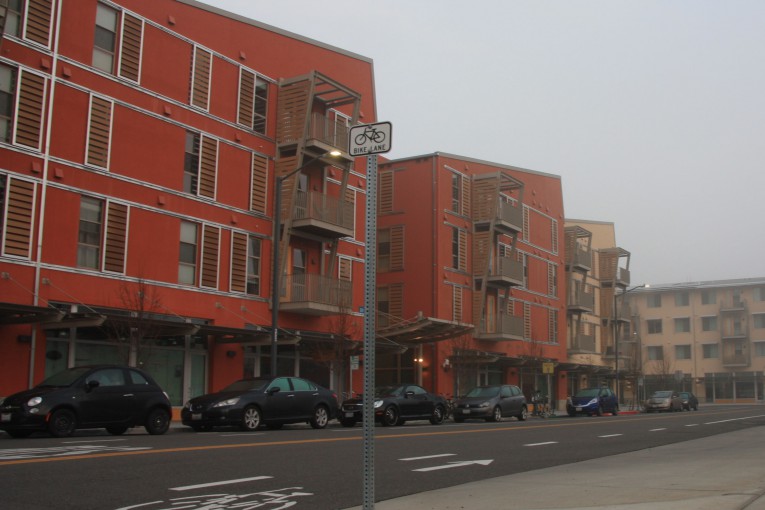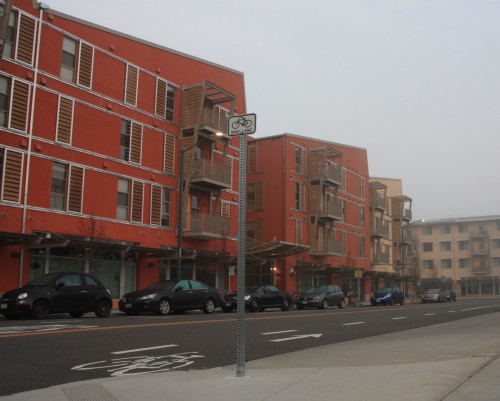

By Gerry Braun
According to UC Davis, “West Village is the largest planned zero net energy community in the United States.” Because its annual energy consumption is roughly matched by solar electricity produced on site, its design is consistent with the University of California’s system-wide climate action goals and plans.
In its lead article on January 5th, “Housing on the city’s 2018 agenda”, The Enterprise points to big changes in our city as UCD expands to serve a larger share of all University of California students. As expected numbers of additional students, faculty and staff locate in Davis, the net effect will be something on the order of a 10 percent local population increase. Current scenarios to meet this growth are reported to rely on construction of a series of “mega-dorms” in city neighborhoods. It appears the first wave of projects is already moving forward toward city approval and private financing.
Moving forward with individual projects on a piecemeal basis without checking for consistency with long term City climate action and infrastructure development plans would be both a mistake and a missed opportunity. The mistake would be to undercut on-going citizen-led efforts to meet the City’s climate action plan. The missed opportunity would be failing to tap the invaluable experience UCD gained in planning and implementing its West Village 
Energy Initiative.
The projects will come before the city’s Planning Commission. Though, according to the City’s permitting process, each project must be considered on its individual merits, cumulative impacts should also receive careful consideration. UCD and the City are major stakeholders. Is there an integrated UCD-student housing plan they both have weighed against their own goals and policies? Does it include all the foreseeable projects in the student housing development pipeline? Does it address and quantify their cumulative impacts? Are there any on-campus projects in the pipeline? Have the City and UCD identified issues where compromise is needed? Is there a process for other stakeholders, including Davis citizens and businesses, to have visibility to the plan and the City/UCD collaboration and dialog that created it?
Developers of “The Cannery” residential development in north Davis adopted some specific West Village energy usage minimization measures. Nevertheless, the development was inconsistent with Davis’s long term decarbonization goals. Its solar arrays are undersized relative to the share of home energy consumed as electricity. Natural gas typically accounts for the lion’s share of post-construction housing-related greenhouse emissions in northern California. Cannery homes use natural gas for space and water heating.
From here on, the design of all new housing development in Davis should be consistent with the City’s climate action goals and plans.
To its credit, UC Davis, in launching and implementing its West Village Energy Initiative, set a new sustainability standard for university student housing. If the City is now to carry the main burden of housing UCD’s future student population, UC Davis should vigorously assist the City in determining decarbonization and energy resiliency standards for new off campus student housing.
For example, UC Davis’s early vision for West Village was captured in specific goals the private land developer was required to meet. One goal was net zero energy. Another was cost-competitive energy service. Neither the developer nor future student tenants were to incur higher costs due to the project’s cutting-edge energy features. Both goals were achieved, thanks to the partnering solar company’s technical prowess, plus generous rebates available from the California’s New Solar Homes program.
State of the art energy analysis completed during the design phase enabled project goals to be achieved. Can new student housing projects in Davis achieve the same goals? Yes. The bar should now be set higher, not lower. One specific opportunity is to revisit the original plan for UCD’s West Village to be served by a micro-grid. Micro-grids are the key to local clean energy resource development which city leaders say they want.
Had West Village’s solar arrays been configured to feed into a micro-grid, UCD would have claimed a leadership role in what has now become a major trend in the global electricity industry. At a minimum new housing projects in Davis should be “micro-grid ready”. The county’s new community choice agency and PG&E can be asked to collaborate with one another to assist the City in setting the standard.
New student housing projects discussed in the Enterprise article are a potential game changer for Davis in aspects of community life that range from energy sustainability and resilience to traffic congestion and even drinking water quality. Fortunately, the city has competent staff and appointed advisory committees capable of assisting regarding finance, budget, utility service, natural resource, permitting and energy resilience concerns, to name a few. There is also expertise available at UC Davis and in the Davis community at large related to any issues where staff expertise is limited.
UC Davis’s West Village provides a benchmark for new student housing in Davis and beyond, while traditional residential development does not. New off-campus student housing should be net zero carbon and micro-grid ready. Without exception. And it can be, without incurring economic penalties to developers or students.
Net zero carbon must be the non-negotiable standard for integrated energy planning and design of additions to the Davis’s housing stock. Otherwise, new projects will also be new sources of greenhouse gas emissions that are unlikely candidates for retrofit programs. Unnecessary additions to Davis’s carbon footprint will have the effect of cancelling the hard-won reductions being achieved through the work of local volunteer groups like Cool Davis.
Gerald Braun is a Davis resident, energy industry veteran, and member of the Davis Utility Rate Advisory Commission

West Village may be a model for net zero energy use, if that’s even a necessary goal, but it is also a model for lavish and near prohibitive construction expense that could only be realized in a lush government contract. Not gonna see this in town student housing. Not that aiming towards net zero is a bad thing, but at some point the cost outweighs the benefits (also reflected in rents).
I would be interested to see how much energy the West Village really uses (I’m betting it is WAY above “zero”). I know of at least one kid running a bitcoining machine 24/7 and since none of the kids get a PG&E or water bill there is “zero” incentive to turn off the lights (or anything else) when you leave or turn off the shower when you take an incoming call…
Energy or net energy?
This is a report from 2015: https://www.ucdavis.edu/news/uc-davis-west-village-tracks-its-progress-toward-zero-net-energy/
The goal is to produce 100 percent of the energy that is consumed. As of 2015, they were 82 of the way there.
”The report shows West Village’s 4.1 megawatts of photovoltaic panels produced 102 percent of their expected energy. However, this production was only 82 percent of the actual demand. ”
Back in 2015 the West Village still had a maximum of one person per room, so with a LOT more people in 2018 (since they now allow room sharing and from what I have been told increasing rents are pushing more people than last year to share rooms) it seems like the “net” energy produced on site is probably lower than 2015…
But they’ve also had nearly two and a half years to progress with their energy design.
In the last 3 years, there have not been the ‘breakthroughs” like those that occurred 10-20 years ago. Incremental, not “impressive” progress… just saying… West Village actually hit a “sweet point”, where tech had been improving, and cost had been decreasing…
So, they are Net Eighteen.
Give yourself a gold star for doing the math…
Yet, it is written, “a person’s reach should exceed their grasp”… seems to apply…
No gold star for me for that . . . but I do get a gold star for pointing out there’s nothing magic about Net Zero. Everything is still connected to the grid. What’s most important is a balance between energy consumption reduction on a site and the value of the point at which getting that closer and closer to zero costs more and more until it isn’t worth it. Only in a government setting could you spend that kind of money just to say “we did it”. And they didn’t do it anyway. What’s important is the Net Eighteen. That may be good enough. Or, better yet, Net Forty and spending that Net 22 difference to decrease energy usage on another site in a more economic way. Now I get a gold star.
Actually, is it zero net energy, or zero net carbon? Big diff….
Think it was intended as the latter… seems like terms are getting confused…
Thinking zero net energy is the best energy-reduction value for money takes zero net brains.